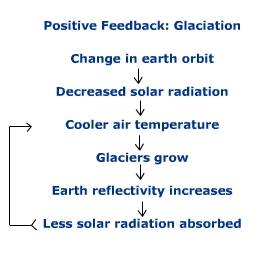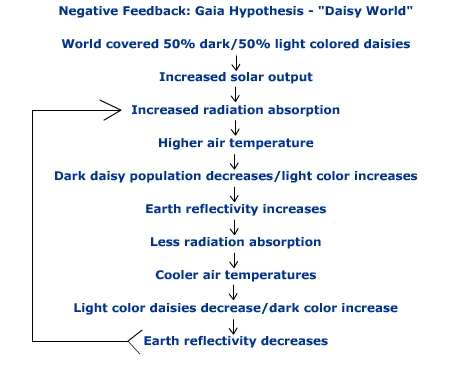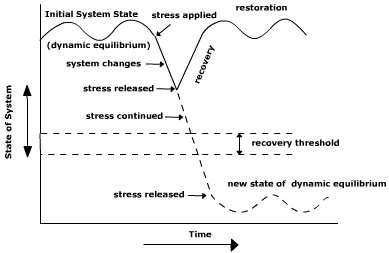2.3.5: Feedbacks
- Page ID
- 15554
\( \newcommand{\vecs}[1]{\overset { \scriptstyle \rightharpoonup} {\mathbf{#1}} } \)
\( \newcommand{\vecd}[1]{\overset{-\!-\!\rightharpoonup}{\vphantom{a}\smash {#1}}} \)
\( \newcommand{\id}{\mathrm{id}}\) \( \newcommand{\Span}{\mathrm{span}}\)
( \newcommand{\kernel}{\mathrm{null}\,}\) \( \newcommand{\range}{\mathrm{range}\,}\)
\( \newcommand{\RealPart}{\mathrm{Re}}\) \( \newcommand{\ImaginaryPart}{\mathrm{Im}}\)
\( \newcommand{\Argument}{\mathrm{Arg}}\) \( \newcommand{\norm}[1]{\| #1 \|}\)
\( \newcommand{\inner}[2]{\langle #1, #2 \rangle}\)
\( \newcommand{\Span}{\mathrm{span}}\)
\( \newcommand{\id}{\mathrm{id}}\)
\( \newcommand{\Span}{\mathrm{span}}\)
\( \newcommand{\kernel}{\mathrm{null}\,}\)
\( \newcommand{\range}{\mathrm{range}\,}\)
\( \newcommand{\RealPart}{\mathrm{Re}}\)
\( \newcommand{\ImaginaryPart}{\mathrm{Im}}\)
\( \newcommand{\Argument}{\mathrm{Arg}}\)
\( \newcommand{\norm}[1]{\| #1 \|}\)
\( \newcommand{\inner}[2]{\langle #1, #2 \rangle}\)
\( \newcommand{\Span}{\mathrm{span}}\) \( \newcommand{\AA}{\unicode[.8,0]{x212B}}\)
\( \newcommand{\vectorA}[1]{\vec{#1}} % arrow\)
\( \newcommand{\vectorAt}[1]{\vec{\text{#1}}} % arrow\)
\( \newcommand{\vectorB}[1]{\overset { \scriptstyle \rightharpoonup} {\mathbf{#1}} } \)
\( \newcommand{\vectorC}[1]{\textbf{#1}} \)
\( \newcommand{\vectorD}[1]{\overrightarrow{#1}} \)
\( \newcommand{\vectorDt}[1]{\overrightarrow{\text{#1}}} \)
\( \newcommand{\vectE}[1]{\overset{-\!-\!\rightharpoonup}{\vphantom{a}\smash{\mathbf {#1}}}} \)
\( \newcommand{\vecs}[1]{\overset { \scriptstyle \rightharpoonup} {\mathbf{#1}} } \)
\( \newcommand{\vecd}[1]{\overset{-\!-\!\rightharpoonup}{\vphantom{a}\smash {#1}}} \)
\(\newcommand{\avec}{\mathbf a}\) \(\newcommand{\bvec}{\mathbf b}\) \(\newcommand{\cvec}{\mathbf c}\) \(\newcommand{\dvec}{\mathbf d}\) \(\newcommand{\dtil}{\widetilde{\mathbf d}}\) \(\newcommand{\evec}{\mathbf e}\) \(\newcommand{\fvec}{\mathbf f}\) \(\newcommand{\nvec}{\mathbf n}\) \(\newcommand{\pvec}{\mathbf p}\) \(\newcommand{\qvec}{\mathbf q}\) \(\newcommand{\svec}{\mathbf s}\) \(\newcommand{\tvec}{\mathbf t}\) \(\newcommand{\uvec}{\mathbf u}\) \(\newcommand{\vvec}{\mathbf v}\) \(\newcommand{\wvec}{\mathbf w}\) \(\newcommand{\xvec}{\mathbf x}\) \(\newcommand{\yvec}{\mathbf y}\) \(\newcommand{\zvec}{\mathbf z}\) \(\newcommand{\rvec}{\mathbf r}\) \(\newcommand{\mvec}{\mathbf m}\) \(\newcommand{\zerovec}{\mathbf 0}\) \(\newcommand{\onevec}{\mathbf 1}\) \(\newcommand{\real}{\mathbb R}\) \(\newcommand{\twovec}[2]{\left[\begin{array}{r}#1 \\ #2 \end{array}\right]}\) \(\newcommand{\ctwovec}[2]{\left[\begin{array}{c}#1 \\ #2 \end{array}\right]}\) \(\newcommand{\threevec}[3]{\left[\begin{array}{r}#1 \\ #2 \\ #3 \end{array}\right]}\) \(\newcommand{\cthreevec}[3]{\left[\begin{array}{c}#1 \\ #2 \\ #3 \end{array}\right]}\) \(\newcommand{\fourvec}[4]{\left[\begin{array}{r}#1 \\ #2 \\ #3 \\ #4 \end{array}\right]}\) \(\newcommand{\cfourvec}[4]{\left[\begin{array}{c}#1 \\ #2 \\ #3 \\ #4 \end{array}\right]}\) \(\newcommand{\fivevec}[5]{\left[\begin{array}{r}#1 \\ #2 \\ #3 \\ #4 \\ #5 \\ \end{array}\right]}\) \(\newcommand{\cfivevec}[5]{\left[\begin{array}{c}#1 \\ #2 \\ #3 \\ #4 \\ #5 \\ \end{array}\right]}\) \(\newcommand{\mattwo}[4]{\left[\begin{array}{rr}#1 \amp #2 \\ #3 \amp #4 \\ \end{array}\right]}\) \(\newcommand{\laspan}[1]{\text{Span}\{#1\}}\) \(\newcommand{\bcal}{\cal B}\) \(\newcommand{\ccal}{\cal C}\) \(\newcommand{\scal}{\cal S}\) \(\newcommand{\wcal}{\cal W}\) \(\newcommand{\ecal}{\cal E}\) \(\newcommand{\coords}[2]{\left\{#1\right\}_{#2}}\) \(\newcommand{\gray}[1]{\color{gray}{#1}}\) \(\newcommand{\lgray}[1]{\color{lightgray}{#1}}\) \(\newcommand{\rank}{\operatorname{rank}}\) \(\newcommand{\row}{\text{Row}}\) \(\newcommand{\col}{\text{Col}}\) \(\renewcommand{\row}{\text{Row}}\) \(\newcommand{\nul}{\text{Nul}}\) \(\newcommand{\var}{\text{Var}}\) \(\newcommand{\corr}{\text{corr}}\) \(\newcommand{\len}[1]{\left|#1\right|}\) \(\newcommand{\bbar}{\overline{\bvec}}\) \(\newcommand{\bhat}{\widehat{\bvec}}\) \(\newcommand{\bperp}{\bvec^\perp}\) \(\newcommand{\xhat}{\widehat{\xvec}}\) \(\newcommand{\vhat}{\widehat{\vvec}}\) \(\newcommand{\uhat}{\widehat{\uvec}}\) \(\newcommand{\what}{\widehat{\wvec}}\) \(\newcommand{\Sighat}{\widehat{\Sigma}}\) \(\newcommand{\lt}{<}\) \(\newcommand{\gt}{>}\) \(\newcommand{\amp}{&}\) \(\definecolor{fillinmathshade}{gray}{0.9}\)Outputs generated by the functioning of a system component either encourages change in the system (positive feedbacks) or discourage change (negative feedbacks). Negative feedbacks act to regulate the system to keep it in a state of equilibrium. Figure \(\PageIndex{1}\) is an example of how a positive feedback can encourage a system to change as it relates to the onset of glaciation. Though many theories have been proposed as to what caused the long periods of glaciation over the course of earth history, a change in the amount of solar radiation absorbed by the surface is common to many of them. One idea is that the orbit of the earth around the sun changed causing a decrease in the amount of solar radiation reaching the earth. This was accomplished by a change in the earth - sun distance or a change in the tilt of the earth's axis. Whatever the reason, a decrease in solar radiation reaching and being absorbed by the surface would have caused the air temperature to decrease. With colder temperatures increased snowfall likely occurred and less snow melted over the course of a year. The build of snow and subsequent change to ice enabled glaciers to form and grow. As the earth is covered with a light colored surface its reflectivity increases. With increased reflectivity, less solar radiation is absorbed. As less radiation is absorbed, cooler temperatures develop, snow duration increases, glaciers grow, and more of the earth is covered by the highly reflective surface of glaciers. The circuit indicated by the arrows in Figure \(\PageIndex{1}\) is the positive feedback.

A negative feedback discourages system change. An example of a negative feedback is used to support the notion of biospheric regulation of the atmosphere called the "Gaia Hypothesis" Some feel that the relatively stable conditions on Earth (atmospheric gas composition, temperature, etc) is due to the regulatory influence of the biosphere over the atmosphere. If some perturbation causes environmental conditions to shift, activities of the biosphere bring them back into balance. To illustrate this process they developed a simple model called "Daisy World". What we know is that the output of the sun has increased since the time our galaxy was formed. As a result, more solar radiation has been reaching the earth through time. However, over long periods of geologic time the air temperature has not changed all that much. Scientists argue that this has been accomplished through various biospheric regulatory mechanisms that alter the gaseous composition of the atmosphere and the nature of the earth surface. Their Daisy World model shows how the distribution of plants can modify the radiation balance of the Earth to regulate temperatures. Their model begins with a world that is covered with 50% dark and 50% light colored daisies. As the output of energy from the Sun increases, more energy is absorbed by the earth which in turn increases air temperature. The darker daisies absorb more sunshine than the light colored daisies because of their color. If the output of solar energy continues to increase, it becomes too much for the dark daisies to endure causing them to begin to die off. The with the lack of competition and their ability to reflect more light and endure higher temperatures, the light colored daisies flourish. As Daisy World becomes covered in a higher percentage of light colored daisies, the reflectivity of the surface increases. This results in a decrease in the absorption of sunshine and a reduction of temperature. Thus the change in the composition of plants in Daisy World dampens the effect of increased solar output. If it gets too cold, the dark daisies begin to flourish, increasing absorption of solar radiation and raising temperatures, causing the cycle to begin again. The negative feedback that is set up ultimately causes the system to reach an equilibrium.

All systems have leverage points, points of vulnerability where an imposed stress yields maximum change. For instance, human intervention in the hydrologic cycle is best achieved at the river-flow stage (dam and reservoir building) as opposed to the precipitation stage (cloud seeding). A trigger (fire, species invasion, fertilizer runoff) sets off an environmental change. Once a change is initiated, the system responds by adjusting the energy and mass exchanges. If the stress is released, a period of recovery to its previous state occurs. Should the system be stressed beyond its threshold, it will seek a new state of equilibrium.

Assess you basic understanding of the preceding material by "Looking Back: Natural Systems" or skip and continue reading.


